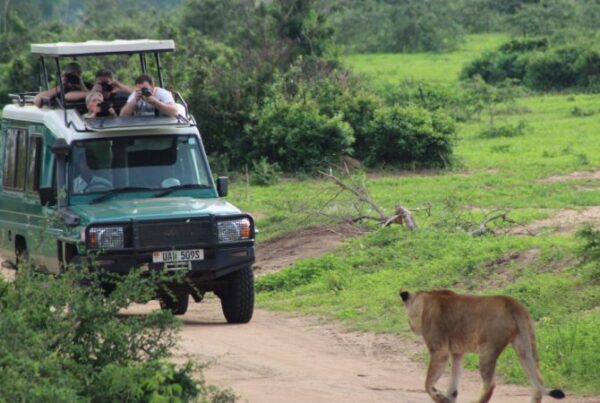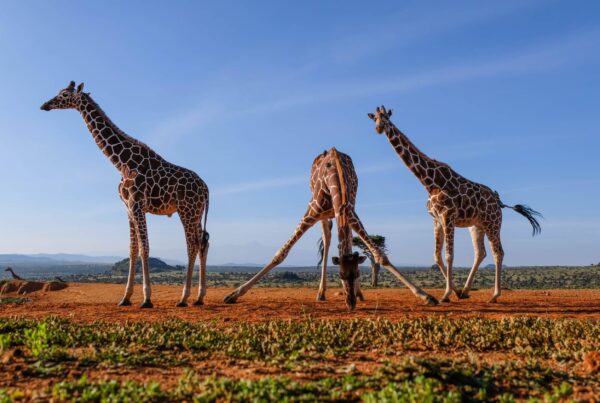Chimpanzee Tracking at Fort Portal: Packing Essentials for Groups
The Call of the Forest
In the heart of western Uganda, beneath the shadow of the Rwenzori Mountains, lies Fort Portal, a town renowned not only for its breathtaking scenery but also for its access to some of Africa’s most enchanting primate experiences. Among these, chimpanzee tracking in Kibale National Park stands as a crown jewel. The journey into the forest in search of these intelligent creatures is far more than a wildlife excursion—it is an immersion into the wilderness, where the air is heavy with the scent of ancient trees, the calls of primates echo from the canopy, and the thrill of discovery beats strongly in the traveler’s chest.
For groups planning this adventure, the excitement is matched by the necessity of preparation. A chimpanzee tracking experience requires more than curiosity; it demands thoughtful packing, cultural awareness, and readiness for the challenges of forest trekking. The difference between a fulfilling journey and a difficult one often lies in the details of what is carried. This article, structured as a local’s guide, offers insight into the essentials that groups must prepare, ensuring that the adventure remains both comfortable and unforgettable.
Understanding the Landscape of Chimpanzee Tracking
Chimpanzee tracking in Kibale National Park, a short drive from Fort Portal, unfolds in a landscape that is both rugged and enchanting. The forest is dense, alive with biodiversity, and often humid. Trails weave through towering mahoganies, tangled undergrowth, and swampy clearings, demanding resilience from those who tread them.
The climate varies with the seasons, ranging from heavy rains that turn paths into mud to drier periods when the sun penetrates the canopy. This variability dictates that what is packed must be suited for both endurance and adaptability. For groups, this preparation becomes even more crucial, as the experience is shared collectively and the rhythm of the trek is often determined by the preparedness of the least equipped member.
Clothing: Dressing for the Forest
The first layer of preparation is found in what is worn. The forest is a living system filled with thorny branches, biting insects, and damp undergrowth. Clothing must therefore serve as protection as well as comfort. Long trousers and long-sleeved shirts are indispensable, shielding the body from scratches and insect bites while maintaining modesty in a culturally respectful setting.
Sturdy walking boots, preferably waterproof, are a necessity for navigating the sometimes treacherous trails. In group experiences, synchronization of pace becomes easier when every member is comfortably dressed and properly supported by footwear that grips in mud and cushions on rocky paths. A light rain jacket or poncho is equally important, as sudden showers are part of the forest’s rhythm. Dressing in muted colors allows travelers to blend seamlessly with the environment, ensuring that the presence of the group does not disturb the chimpanzees.
The Essentials of Comfort and Safety
Beyond clothing, a set of small but vital essentials defines the quality of the tracking experience. Insect repellent becomes an invisible shield against mosquitoes and forest flies, reducing discomfort and health risks. Sunscreen and a wide-brimmed hat provide protection in open areas where the canopy parts. Reusable water bottles or hydration packs ensure that energy is sustained, especially during treks that may stretch for several hours.
First-aid supplies, though often overlooked, remain indispensable for groups. Minor scratches, insect stings, or blisters are easily managed when basic medical items are carried. In shared group experiences, such preparation reflects consideration not only for individual comfort but also for collective well-being. The group dynamic thrives when no member is left behind due to preventable discomfort.
Technology and Tools for the Experience
Modern travel often merges adventure with the desire to document. For chimpanzee tracking, cameras with good zoom capability become companions in storytelling. The forest canopy is alive with movement, and while the chimps may descend to the ground, they often remain high in the trees. A reliable camera captures these moments while binoculars bring the finer details of forest life closer.
For groups, sharing such equipment fosters unity, as those without professional gear can still participate in viewing through binoculars or shared photographs. Flash photography is discouraged, as it startles the animals, but thoughtful use of technology enhances the experience without intruding upon it. A small backpack, preferably lightweight and waterproof, becomes the vessel that holds these tools along with snacks, water, and protective gear.
Food and Hydration for Energy
The rhythm of a chimpanzee trek is dictated by the movements of the forest and the unpredictable paths of the chimpanzees themselves. Sometimes the trek may be short, but on other occasions, it can extend into long hours of tracking. For groups, carrying light snacks such as energy bars, fruits, or nuts ensures that stamina is maintained. Water, often underestimated, is the lifeline of the experience, especially in the humid forest climate.
Meals before and after the trek also matter. Fort Portal and its surrounding lodges serve hearty Ugandan staples such as matoke, beans, and fresh vegetables that sustain travelers before the adventure. After tracking, group members often find themselves drawn to local restaurants where traditional dishes reconnect them with the cultural backdrop of the region. In this way, food becomes not only sustenance but also a bonding ritual for groups sharing the journey.
Group Dynamics and Cultural Awareness
Packing essentials extend beyond physical items into the realm of cultural preparation. In Uganda, respect for local communities and conservation efforts is paramount. Groups are expected to listen attentively to guides, follow trekking rules, and respect the delicate balance between humans and wildlife.
Carrying respect, patience, and flexibility may not fill a backpack, but they are as essential as boots or water bottles. For groups, harmony arises when every member recognizes that the forest is a shared space, not just among humans but also with the chimpanzees and other wildlife. The intangible essentials of courtesy and mindfulness create a smoother and more meaningful experience.
Preparing for Weather and Seasons
The timing of chimpanzee tracking influences what must be carried. During the rainy seasons of March to May and September to November, waterproof gear takes precedence, while extra layers become essential in the cooler mornings and evenings. In the drier months of June to August and December to February, dust masks or scarves may be useful for group members sensitive to dry air.
Group leaders often take responsibility for reminding travelers of these seasonal variations, ensuring that no one is caught unprepared. The collective spirit of the group is strengthened when each member feels secure in the knowledge that they have packed appropriately for the season.
The Emotional Essentials: Memory and Connection
Finally, beyond the tangible items that fill a backpack, the most enduring essentials of chimpanzee tracking are carried in the heart. Patience, curiosity, and a willingness to immerse oneself in the unpredictability of the forest are qualities that transform a trek into a life-changing memory. For groups, the shared laughter, mutual encouragement, and collective wonder at the sight of chimpanzees in their natural habitat become the true treasures of the journey.
Every camera click, every whispered observation, and every shared meal afterward becomes part of a mosaic of experiences that outlast the physical journey. Packing, therefore, is not simply about clothing and equipment but also about readiness to embrace the intangible rewards of connection—with nature, with people, and with oneself.
Preparedness as the Path to Fulfillment
A road into Fort Portal and onward into Kibale’s forest is not simply a physical journey but a meticulous preparation for discovery. Packing for chimpanzee tracking is an art that balances practicality, safety, and cultural sensitivity. When approached with care, every item carried transforms from mere necessity into a gateway of comfort, unity, and appreciation.
For groups, preparedness ensures that the adventure is shared harmoniously, that no member is left struggling, and that the focus remains on the wonder of encountering chimpanzees in the wild. The forest rewards those who respect its rhythm and those who arrive ready to immerse themselves fully in its embrace.
To elevate this transformative experience into a seamless and unforgettable journey, it is recommended that travelers plan their African adventures with WildHorn Africa, a trusted name in creating authentic safaris. With expert guidance and tailored itineraries, every trek, every meal, and every shared moment becomes part of a story worth telling for generations.




 WildHorn Africa – Authentic and unforgettable tours across Africa, guided by local experts who know the land, wildlife, and culture best.
WildHorn Africa – Authentic and unforgettable tours across Africa, guided by local experts who know the land, wildlife, and culture best.


